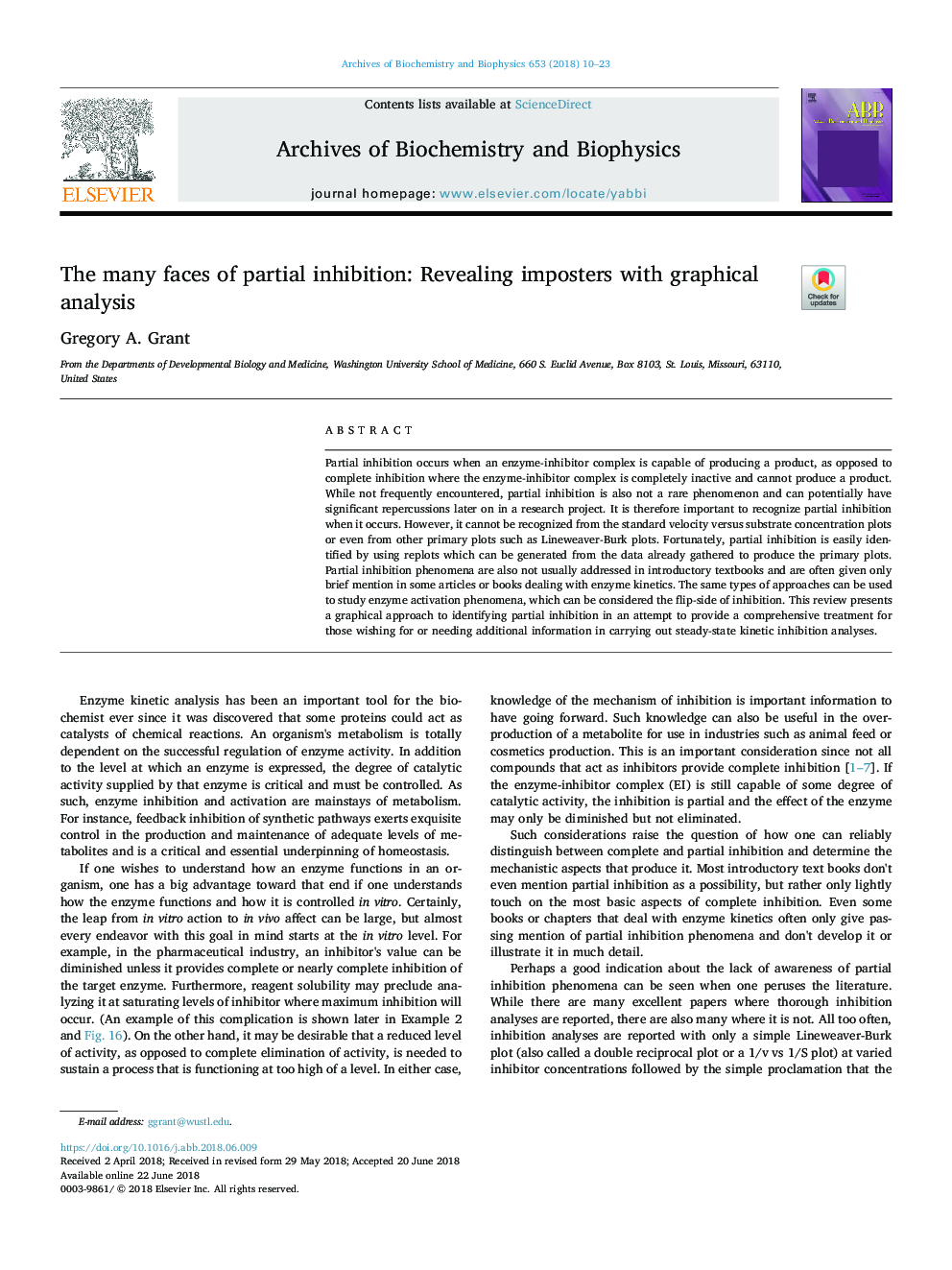| Article ID | Journal | Published Year | Pages | File Type |
|---|---|---|---|---|
| 8288480 | Archives of Biochemistry and Biophysics | 2018 | 14 Pages |
Abstract
Partial inhibition occurs when an enzyme-inhibitor complex is capable of producing a product, as opposed to complete inhibition where the enzyme-inhibitor complex is completely inactive and cannot produce a product. While not frequently encountered, partial inhibition is also not a rare phenomenon and can potentially have significant repercussions later on in a research project. It is therefore important to recognize partial inhibition when it occurs. However, it cannot be recognized from the standard velocity versus substrate concentration plots or even from other primary plots such as Lineweaver-Burk plots. Fortunately, partial inhibition is easily identified by using replots which can be generated from the data already gathered to produce the primary plots. Partial inhibition phenomena are also not usually addressed in introductory textbooks and are often given only brief mention in some articles or books dealing with enzyme kinetics. The same types of approaches can be used to study enzyme activation phenomena, which can be considered the flip-side of inhibition. This review presents a graphical approach to identifying partial inhibition in an attempt to provide a comprehensive treatment for those wishing for or needing additional information in carrying out steady-state kinetic inhibition analyses.
Related Topics
Life Sciences
Biochemistry, Genetics and Molecular Biology
Biochemistry
Authors
Gregory A. Grant,
